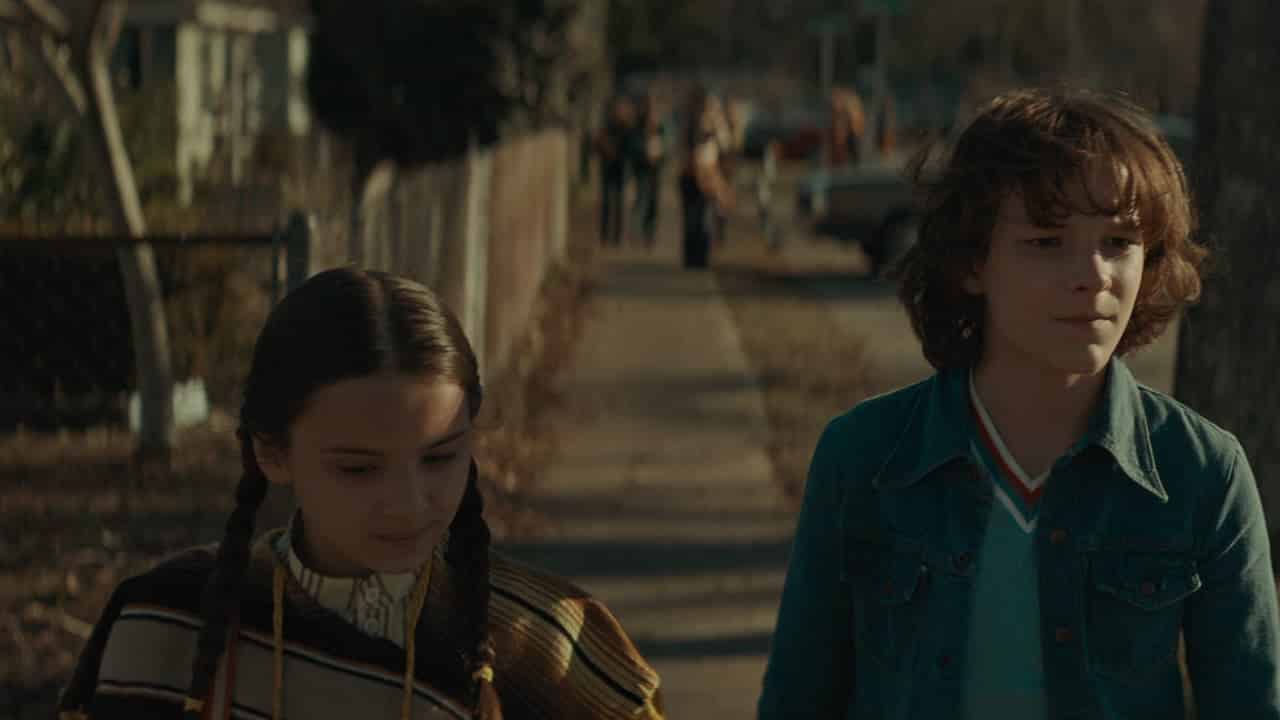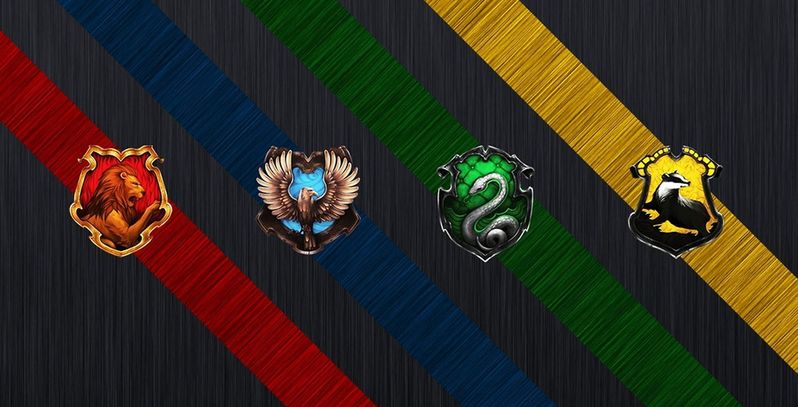The free video streaming platform has some clunkers, but also more than a few gems.
With Halloween approaching quickly, there’s no better time to get all of the spooky movie intake you can. The big hitters in streaming services have a plethora to choose from, but so many of them are paid services. For those interested in catching a few horror movies for free, Tubi is a solid alternative (if you don’t mind ad breaks, of course). Although the service has a reputation for putting pretty awful horror films in its lineup, there are plenty of quality ones worth watching as well.
Jennifer’s Body (2009)

For those looking for a little tongue-in-cheek horror, they can do far worse than Jennifer’s Body. The comedy-horror directed by Karyn Kusama (The Invitation) is packed with star power and has a premise that doesn’t strike most as run-of-the-mill. With a core cast including Megan Fox (Transformers), Amanda Seyfried (Mean Girls), Adam Brody (Ready or Not), and Johnny Simmons (The Perks of Being a Wallflower), there’s plenty of acting to take in. Throw in appearances by Chris Pratt (Guardians of the Galaxy) and J.K. Simmons (Spider-Man), and you’ve got a mix to impress. The timeless teenage theme of raging hormones is at play, but there’s more than enough dark humor and violence to keep the ball rolling.
A somewhat withdrawn teenager named Needy (Seyfried) is close friends with popular cheerleader Jennifer (Fox) despite them being diametric opposites. When the two attend the show of an indie rock band one night, a fire breaks out and causes total havoc. Jennifer leaves with the band, and Needy doesn’t see her again until far later that night. Jennifer is different and otherworldly despite looking the same. She has murder on her mind, and she’s using her skills at seduction to draw in her prey. Needy is stunned by this transformation and begins to investigate her friend’s “condition,” taking her down a path of occultism she never expected.
Train to Busan (2016)

This South Korean flick is, plainly put, one of the best zombie movies of the past several years. The first Korean film that year to break the record of 10 million audience members in theaters, director Yeon Sang-ho’s (The King of Pigs) action-horror product is gripping and intense. Western audiences may not recognize the names of the cast (Gong Yoo, Yu-mi Jung, Ma Dong-seok, Su-an Kim), but their performances are worth remembering.
The story follows the passengers of the titular high-speed train destined for Busan, the second-most populous city in South Korea. However, a leak of biohazardous materials at a nearby plant is about to throw the whole country into chaos. The infection spreads from car to car as the train leaves Seoul, and the passengers are trapped inside with little means of escape. Utilizing the train’s cars and keeping an eye on national news reports, the survivors attempt to plan their way out. An early attempt to disembark at a nearby station sees heavy losses and significant separation before the group returns to the train, and things get even worse from there.
Emotion and action run high while the survivors are packed in like sardines, making the tension from shot to shot almost palpable. Physical and mental limits are pushed to their brink, and it’s difficult not to get sucked in.
The Exorcist III (1990)

It’s no secret to horror fans that the sequels of the legendary film The Exorcist (1973) are largely awful and go against much of what made the original special. However, The Exorcist III, originally known as Legion, is likely the best sequel in the franchise. It has its issues, but fans of psychological horror may find that this movie has gotten a bad wrap because of the travesties that came before and after.
The director’s chair for The Exorcist III was filled by none other than William Peter Blatty, who wrote the original Exorcist novel and the screenplay for the original film. Not coincidentally, this film is adapted from Blatty’s hit novel Legion, and 20th Century Fox gave him leeway to bring his novel to life on the silver screen. The film is bolstered by the acting chops of actors like George C. Scott (Patton), Ed Flanders (St. Elsewhere), Brad Dourif (Child’s Play), Scott Wilson (The Walking Dead), and the return of Jason Miller (The Exorcist).
The film is treated as the true sequel to The Exorcist, ignoring the mess that was The Exorcist II: The Heretic (1977), and is set 15 years after the exorcism of Regan MacNeil (Linda Blair). A string of murders soon draws Police Lieutenant Kinderman (Scott) onto the trail of a serial killer. The modus operandi matches that of a man coined the “Gemini Killer” who had been executed years earlier. Could it possibly be the same person? Something doesn’t add up, and it comes as no surprise that the metaphysical forces of evil are once again at work.
The Exorcist III, while operating as a sequel, doesn’t ride the coattails of the first film much. The biggest downside of the theatrical cut is, oddly enough, the exorcism scene, which wasn’t intended and was insisted upon by the production suits at Morgan Creek Productions. It feels tacked-on and almost completely unnecessary. However, Scream Factory released a director’s cut in 2016 that more closely mirrors Blatty’s original vision. Unfortunately, the version on Tubi is the theatrical cut, but that shouldn’t keep curious horror fans away from this film. It can’t measure up to the original Exorcist, but it stands alone as a solid movie in a slew of dreadful sequels.
Candyman (1992)

Chock full of eerie atmosphere and disturbing imagery, Candyman was originally an adaptation of horror author Clive Barker’s (Hellraiser) short story titled “The Forbidden.” The original story centered on the contemporary class system in Britan, but director Bernard Rose re-tooled the narrative to public housing, race, class, and poverty in Chicago after a chance meeting with Barker, who agreed to license the rights for an adaptation. Released in October 1992, the film performed well at the box office and is considered by many critics to be a horror classic of the time period.
The adapted story concerns a graduate student named Helen Lyle (Virginia Madsen) who is working on a thesis regarding urban legends and the staying power of word-of-mouth storytelling. This eventually brings her attention to the local legend of the Candyman (Tony Todd), the hook-handed spirit of the son of a slave who was butchered for his relationship with a white woman in the 1800s. Similar to the urban legend of Bloody Mary, saying the name “Candyman” in the mirror five times is rumored the summon the malicious ghost, who will then kill the summoner.
Helen follows a string of murders rumored to be perpetrated by Candyman, and it isn’t long before she encounters him herself. Though Candyman is still considered an antagonist, the depth and portrayal that Tony Todd brings to the character is haunting and yet still retains sympathy. The context of class and race is always present without needing significant exposition, and the cruel fate of the film’s “villain” leaves viewers to think on the social ills of contemporary America.
Don’t let the cerebral stuff fool you though, there’s still plenty of blood and gore and even a use of insects that can cause discomfort for more than a few watchers.
Terrifier (2016)

Pieced together in part by previous short films created by director Damien Leone, Terrifier is a love letter to 80s slasher movies spearheaded by the return of Art the Clown (David Howard Thornton), a depraved mime originally featured in Leone’s anthology horror film All Hallow’s Eve (2013). Lovers of on-screen brutality likely won’t want to miss this film, although the sheer violence depicted, specifically towards women, might be too much for some.
For a movie made on a $100,000 budget, it has received a generally positive reception and saw a limited theatrical release after impressing viewers at the Telluride Film Festival. It won’t blow away anybody with thought-provoking writing or insightful dialogue, but it can be a bloody and enjoyable romp in the vein of slashers of yesteryear (without the censorship of the era). Thornton’s depiction of the antagonist is excellent, which carries the film along despite a lack of development in his three unfortunate victims portrayed by Jenna Kanell (The Bye Bye Man), Catherine Corcoran (Return to Nuke ‘Em High), and Samantha Scaffidi (Demon Hole).
At 86 minutes, Terrifier is a short but intense watch. Though it could be considered over-the-top with its violence and gore, fans that enjoy films that push the envelope should give this movie a shot.
The Texas Chain Saw Massacre (1974)

Director Tobe Hooper’s (Poltergeist) landmark work is iconic in horror for its cinematography, grittiness, aesthetic, and of course its violence for the time period. The documentary-style camerawork brings an authenticity to the film that wasn’t often seen aside from well-known examples such as Cannibal Holocaust (1980). The initial stage-setting of the movie’s story wants watchers to believe that this story is based on real events, and its execution lends a ton of help to that suspension of disbelief. In reality, the premise was partially based on the Wisconsin murderer and graverobber Ed Gein.
Framing its story around the assumption that the film is a recreation of “one of the most bizarre crimes in the annals of American history,” the film follow the Hardesty siblings Sally (Marilyn Burns) and Franklin (Paul A. Partain), as well as some friends, as they investigate the alleged vandalism of their grandfather’s grave. Low on gas for the return trip, Kirk (William Vail) and Pam (Teri McMinn) approach a nearby house, inadvertently drawing the attention of the Sawyer family, a clan of man-eaters. The film’s main antagonist is Bubba Sawyer, known to horror fans everywhere as Leatherface (Gunnar Hansen), a man who wears a mask of human skin and brandishes crude weapons such as a cattle hammer and chainsaw. Gruesome bloodshed ensues as the group is drawn into the Sawyer house while the family of psychopaths attempts to make a meal of them.
Since 1974, Texas Chain Saw Massacre has seen plenty of sequels, a remake and spin-offs. Though the film was met with negative response on its release, it has now joined the pantheon of horror classics, and Leatherface has become synonymous with the idea of brutality.
The Hills Have Eyes (1977)

Written, edited, and directed by terror master Wes Craven (The Last House on the Left, A Nightmare on Elm Street, Scream), The Hills Have Eyes is a film based partially on the folklore of Sawney Bean, the alleged head of a clan of Scottish cannibals. Releasing three years after The Texas Chain Saw Massacre, Tobe Hooper’s horror DNA can be found in this horror classic. On a budget of less than $1 million, The Hills Have Eyes went on to gross $25 million.
On the way to sunny Los Angeles, the Carter family is traveling through Nevada’s Mojave Desert. After the crash of their vehicle, they find themselves stranded in the desert and at the mercy of hillside cannibals who prey on travelers for food and supplies. As far as the violence is concerned, this film can be hard to watch, showcasing scenes of animal violence, crucifixion, and sexual assault. Craven’s earlier work is well-known for its unvarnished view of the depths that human beings are willing to stoop to, with The Hills Have Eyes being directly inspired by this notion. It can be a harrowing experience for those that may not know what they’re getting into.
Dig a little deeper and you find a rejection of religious ethics, United States class warfare, cult psychology, and what otherwise civilized people are willing to do to ensure their survival. The film forces us to look at the wounds of our civilized culture and its destruction in the face of basic instincts while also asking viewers to take a good look in the mirror at themselves.



